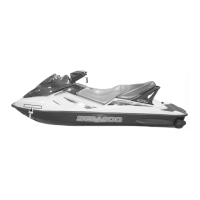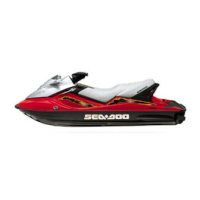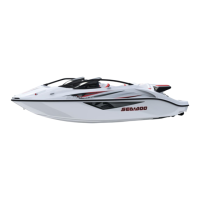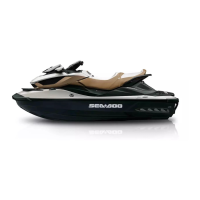Section 06 ELECTRICAL SYSTEM
Subsection 02 (CHARGING SYSTEM)
A17E0IB
-
+
1
32
Step 1: Unplug battery charger
Step 2: Disconnect - lead
Step 3: Disconnect + lead
– Test battery state of charge. Use a hydrometer.
A17E0JA
1
1. Specific gravity 1.265
– If electrolyte level has dropped after charging,
fill with distilled water to UPPER LEVEL line.
After water is added, continue charging for 1 to
2 hours to mix water with electrolyte.
– Reinstall caps and clean any electrolyte spillage
using a solution of baking soda and water.
NOTE: Hand tighten caps then tighten an addition-
al 1/4 turn using a 20 mm (3/4 in) socket. Using
other tool could damage the plastic battery caps.
WARNING
Battery electrolyte is caustic. To prevent
spillage, battery cell cap should be sufficient-
ly tight to properly seal.
Charging a Used Battery
WARNING
Never charge battery while installed in water-
craft.
For best results, battery should be charged when
the electrolyte and the plates are at room tempera-
ture. A battery that is cold may not accept current
for several hours after charging begun.
Do not charge a frozen battery. If the battery
charge is very low, the battery may freeze. If it is
suspected to be frozen, keep it in a heated area
for about 2 hours before charging.
WARNING
Always charge battery in a well ventilated
area.
The time required to charge a battery will vary de-
pending on some factors such as:
– Battery temperature: The charging time is in-
creased as the temperature goes down. The
current accepted by a cold battery will remain
low. As the battery warms up, it will accept a
higher rate of charge.
– State of charge: Because the electrolyte is
nearly pure water in a completely discharged
battery, it cannot accept current as well as
electrolyte. This is the reason the battery will
not accept current when the charging cycle first
begins. As the battery remains on the charger,
the current from the charger causes the elec-
trolytic acid content to rise which makes the
electrolyte a better conductor and then, the
battery will accept a higher charging rate.
– Type of charger: Battery chargers vary in the
amount of voltage and current that they can
supply. Therefore, the time required for the bat-
tery to begin accepting measurable current will
also vary.
Charging a Very Flat or Completely
Discharged Battery
Thebatterychargershouldhaveanadjustable
charging rate. Variable adjustment is preferred,
but a unit which can be adjusted in small incre-
ments is acceptable.
Thebatterychargermustbeequippedwithanam-
meter capable of accurately measuring current of
less than 1 ampere.
smr2005-016 161
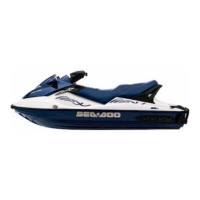
